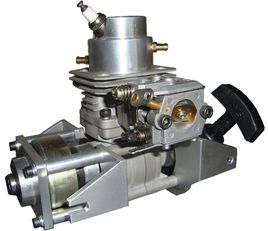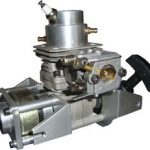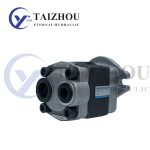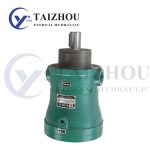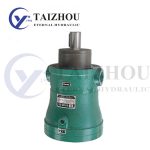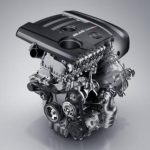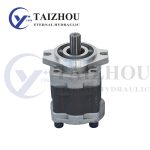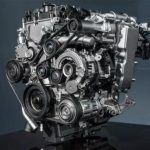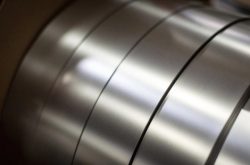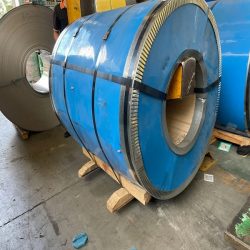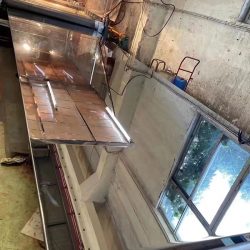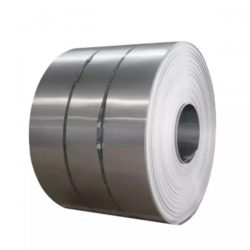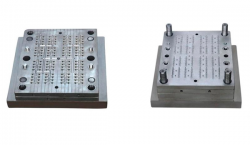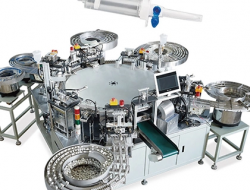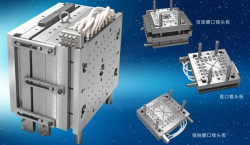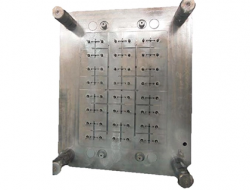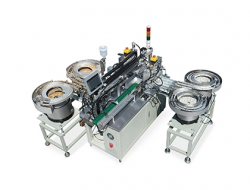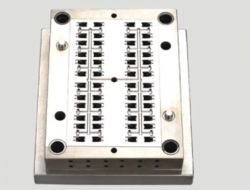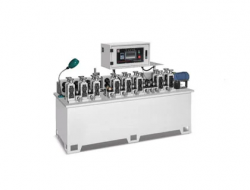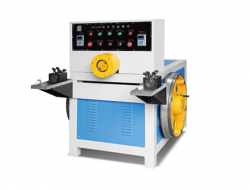Eaton Char-Lynn Motor , Gasoline Motor: Common Faults
The Eaton Char-lynn Motor outlines several common faults and preventive measures for gasoline motors for your reference:
Knock
The gasoline motor will produce knocking phenomenon, analyze the phenomenon of knocking, and understand the cause of it, and solve it according to the crux.
The combustible mixture of a gasoline motor is initially ignited by high pressure. Then, the burning flame is centered on the spark plug and propagates outward to ignite the mixture in the combustion chamber. This combustion process is normal combustion. If the remaining mixture is not ignited before the flame arrives, it will ignite itself. This type of combustion is called knocking.
Knocking is not allowed during normal motor operation. It will cause increased wear and tear on the motor block components, shortened service life, and even rapid destruction. It will also reduce motor power and increase fuel consumption.
The phenomenon of knocking:
1. The knocking will suddenly generate a shock wave in the cylinder and impact on all sides, causing strong vibration of the piston, cylinder wall, connecting rod and crankshaft of the motor, and irregular metal knocking sounds;
2. The cooling system temperature is too high;
3. The fuel is not completely burned, and there is black smoke in the exhaust gas;
4. The motor power is reduced and the fuel consumption is increased.
Solution:
1. Reduce the ignition advance angle;
2. Use gasoline that matches the grade (octane number);
3. Eliminate carbon deposits in the combustion chamber;
4. If knocking occurs on the uphill slope of the car, it should be changed to the low speed gear in time;
5. When the car starts, don’t switch to the direct file too early.
6. When the motor load is too large and knocking occurs, closing the small throttle valve can also reduce the knocking effect.
Pull cylinder
Pulling the cylinder is a phenomenon in which the upper and lower scratches are generated in the area where the inner surface of the cylinder liner reciprocates with the piston. Generally, the cylinder pulling phenomenon often occurs during the motor after the overhaul; some also occur in normal operation. . When the cylinder is pulled, a slight trace of the trace on the inner surface of the cylinder liner is generally present, and a severe sheet-like strain is less likely to occur. The parts of the strain are mostly on both sides of the cylinder liner of the vertical piston pin axis. Most of the damaged parts of the pull cylinder are the cylinder liner (inner surface), the piston (outer surface) and the piston ring (outer surface contact surface).
The basic reason for the damage of the pull cylinder is that local dry friction occurs between the cylinder liner and the piston friction ring. Thereby, the microprotrusions of the metal surface are in contact with each other. Under the action of high load, the micro-protrusions are deformed, and in the mutual movement, a large amount of frictional heat is generated, so that the micro-protrusions are melted and fused, and then pulled apart, forming a scraping trace and generating wear debris. The metal grinding chips are pressed against the surface of the piston (without lubricating oil to wash them away), causing scratches on the cylinder wall.
There are many factors that affect the pulling of the cylinder, and the situation is more complicated. It is mainly related to the work of the motor (temperature and load), the cooperation between the piston and the cylinder liner and its matching materials. However, the running-in condition of the motor during the running-in period is the key to affecting the pulling cylinder.
The basic factors that cause the cylinder are the following three aspects.
1. The temperature between the piston and the cylinder liner of the motor is too high.
1) The thermal load of the motor is too large, so that the temperature of the whole machine is too high. The optimal thermal state of the motor is that the cooling water temperature is maintained between 75 °C and 85 °C. If the motor heat load is large, or its cooling effect is not good, the motor The temperature will be too high, the piston will expand and deform too much; the gap between the cylinder liner and the piston will be too small, and it will be difficult to form a good lubricating oil film. Even if the lubricating oil is charred or burned at high temperature, the piston ring sticks to the cylinder wall. The knot causes sudden explosion and pre-ignition, which produces a dry friction state and aggravates motor wear.
2) The accuracy and finish of the inner surface of the liner and the shape (taper and ovality) exceed the specified standards. The sealing action of the piston ring is reduced, and the combustion gas in the cylinder breaks into the skirt of the piston, so that the temperature of the skirt is too high, the lubrication condition is deteriorated, and local dry friction occurs.
3) The piston is displaced in the cylinder sleeve and the eccentric wear occurs. Due to the deformation of the piston, the piston pin hole is offset, the cylinder is honed, the connecting rod is bent or twisted, the crankshaft is changed, and the crank pin is not parallel to the main journal. For other reasons, the piston will be unilaterally biased in the cylinder. At this time, the pressure of the piston ring against the cylinder wall is relatively concentrated on the partial surface, so that the oil film between the cylinder liner and the piston ring becomes thin or even broken under a large pressure, thereby losing lubrication and forming dry friction. And the temperature has increased dramatically.
4) motor deflagration, when the motor is working, the fuel octane number is too low, the ignition time is too early, the compression ratio is too high, the spark plug is overheated, and the carbon deposit in the combustion chamber is serious, which will cause deflagration. As a result, the local temperature of the cylinder wall is rapidly increased, and the lubricating oil film is broken or coked into a glue, and the piston ring is stuck in the ring groove to cause air leakage. In addition, the combustion gas is knocked against the cylinder bore by the detonation, so that the cylinder liner is prone to dry friction and scratches.
5) The inner surface of the cylinder liner is poorly lubricated. Due to insufficient lubricating oil, too low oil pressure, and poor oil quality, it is impossible to ensure that the heat generated by the metal friction surface is taken away during lubrication, causing high temperature deformation of the metal.
6) The cooling effect is not good. Due to lack of water, the inside of the radiator is blocked, the outer wall of the cylinder liner and the scale are excessively attached, the fan is improperly installed, the fan belt is too loose, the fan volume is too small, and the pump displacement is too low, which causes the motor to be cold and poor, resulting in overheating of the motor. Water temperature and high temperature of lubricating oil are too high. In particular, overheating occurs during the running-in period, and it is easy to pull the cylinder.
2. The materials of the piston ring, piston and cylinder liner are improperly matched.
There are many units producing auto parts in China, the quality of the parts is unstable, the piston expansion coefficient of each manufacturer is different, and the surface hardness of the cylinder sleeve and the piston ring are different. These may cause the cylinder to be pulled, such as when replacing the piston ring. The end gap should be reserved according to the standard; the chrome-plated cylinder sleeve should not be equipped with a chrome-plated piston ring to avoid causing a hard-drawn cylinder.
3, assembly and process problems
1) The piston pin is too tightly assembled, which easily causes the cylinder to be pulled at both ends of the axial direction;
2) The piston pin retaining ring is disengaged, which can cause extremely serious pulling cylinder;
3) improper treatment of the piston ring incision, the opening of the ring is too large, and the corners of the ring are protruding;
4) The piston ring end face has a large gap;
5) The motor speed rises too fast when the motor is cold start, or the load is added too fast.
9.Eaton Charing motor, gasoline motor is difficult to start?
10.Eaton Charing motor – Gasoline motor Difficult to Start: Reason
The Eaton Charing motor illustrates seven reasons why gasoline motors are difficult to start and cannot start.
In the case of normal motor conditions, failure of the starter or battery can make the motor difficult to start or even start. In this case, first understand the use of the starter and the battery, in order to roughly determine the fault location. If the battery has been used for more than one year, it should be checked for technical conditions. If the battery is used for a short period of time and the starter has not been repaired for a long time, it should be checked from the starter. Then analyze and process according to the fault phenomenon at startup:
1. When starting, only the “giggle” sound of the electromagnetic switch of the starter is heard, or the starter drives the crankshaft to rotate slowly for a few times, and then the starter electromagnetic switch “giggle” sounds, but the crankshaft does not rotate. This phenomenon generally belongs to the battery “breaking grid” fault.
2. Temporary parking can be started every time, but the parking time is longer or the cranking can only be turned when starting the next day. This phenomenon is caused by serious self-discharge of the battery, and the plate and the separator are seriously deteriorated, indicating that the battery is near scrapped.
3. When starting, the starter suddenly turns weak, and it is accompanied by burning rubber smell or smoke from the battery. Most of them are pole piles and pole pile clamps are badly contacted and burnt.
4. If the starter drive gear and the motor flywheel ring gear make a idling sound when starting, there are two reasons: one is the deformation of the meshing cutting plane of the flywheel ring gear; the other is that the gap between the starter drive gear and the flywheel ring gear is too large. . The two cannot mesh and the motor will not start.
5. When the main power switch is turned on, the starter drive gear is meshed with the flywheel ring gear. This kind of failure occurs. First, the holding coil of the starter electromagnetic switch is connected to the power supply terminal. Second, the three wires on the key switch are connected incorrectly. The judgment method is: when the key is in the “0” position, the starter drive gear is started. If it does not turn, start the motor drive gear to rotate with the flywheel ring gear when it is in the “2” position.
6. When the start switch is turned to the starting position, the motor cannot be started, and there is no other phenomenon. The fault is that the key and the switch are not connected to the starting circuit due to wear; the second is that the starter relay is not turned on to the starter electromagnetic switch circuit; and third, the power switch is not turned on.
7. There is only a slight “beep” at the start, and there is no response. This is caused by the start relay issuing. At this time, just press the tail of the electromagnet and force the electromagnet to move forward, then the starting circuit can be turned on to start the motor.
https://www.xjetl.com
